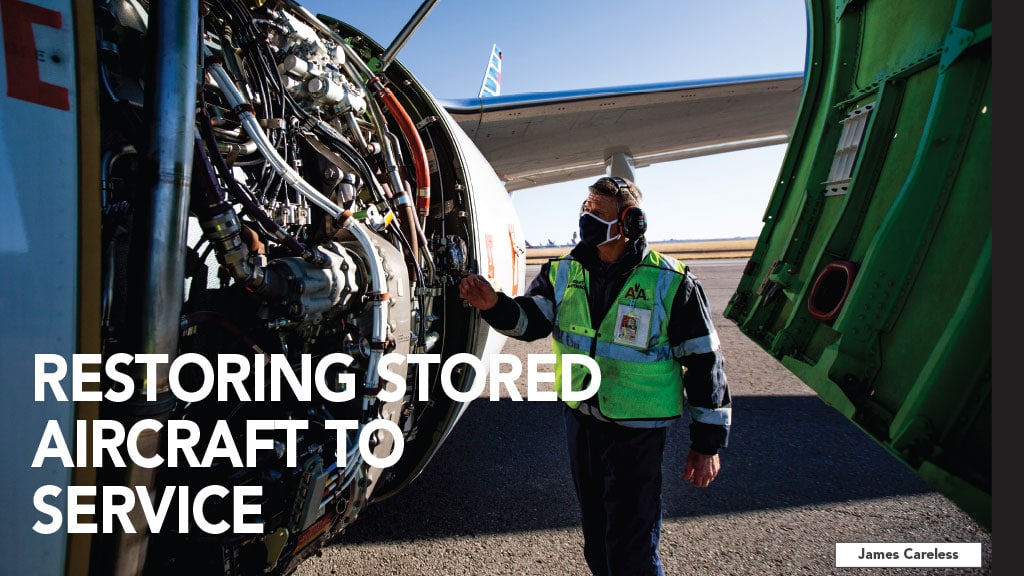Rising like a phoenix out of the ashes — or out of the dust of the dessert — parked aircraft are being returned to service as vaccinations begin working, the pandemic recedes, and the pace of travel steps up. Returning stored aircraft to service is a complex and painstaking process.
The apparent waning of COVID-19 is encouraging airlines to resume normal passenger schedules after a year of storing unused aircraft. Unfortunately, bringing these airliners back online isn’t as easy as starting up a parked car. There are many steps that have to be taken to achieve this safely and in line with Original Equipment Manufacturers’ (OEMs) guidelines.
In fact, returning stored aircraft to service is just the last phase in a process that began last year. That is when these airliners were grounded due to COVID-driven route suspensions, border closures, and overall declines in passenger traffic. They then had to be maintained while in storage, during which time issues related to long-term inactivity cropped up. Now that these aircraft are needed once again, further work has to be done ensure that they can resume flying safely and reliably.
To put all of this in context, Aviation Maintenance magazine spoke with OEMs, airlines, and MROs. Here’s what they told us.
Preparing for Storage
Even in normal times, preparing an aircraft for long-term storage requires a fair degree of time and effort. According to the MRO Avia Solutions Group, storing a single widebody aircraft like an Airbus A380 or Boeing 777 takes 4-6 employees working together for a 12-hour shift. The reason aircraft storage is so labor-intensive is due to how much has to done to anticipate and forestall damage from all kinds of hazards. According to Ed Sangricco, American Airlines’ managing director of Tech Ops – Tulsa, “some of the regular tasks for putting aircraft into storage include covering any openings to keeping wildlife and debris out, preserving engines, lubricating flight controls and landing gear, putting up window shades, and implementing ways to minimize moisture in the cabin and on the flight deck.” As well, in-flight entertainment screens and systems have to be covered, and potable water tanks and fuel tanks must be dosed with anti-growth agents for indefinite non-use.

Storing aircraft in regular circumstances can be challenging, but at least such storage can be methodically scheduled and resource-planned beforehand. “Long-term groundings, be it in flight-ready conditions or storage, are not unusual in our industry,” noted Claire Kauffmann, Airbus’ head of Scheduled Maintenance Services. “So the tasks that need to be performed during the grounding period and to safely return the aircraft in service are already well known and well documented.”
“What makes the Covid 19 groundings different is their scale, their unexpectedness and the suddenness – often within a few days,” Kauffmann explains. “This was the reason that Airbus offered more flexibility in maintenance recommendations without compromising on safety. We aimed to prevent all potential issues linked to parking and storage taking into account the parking conditions and locations.”
Boeing took the same proactive attitude to supporting airline clients during the unexpected COVID-19 rush to ground aircraft. “We partnered closely with operators to ensure safe and proper storage,” said Boeing spokesperson Rafael Gonzalez. “During this period, Boeing captured Best Practices and performed cross-model collaborations to ensure that the right procedures were applied across the Boeing fleet.”
This kind of support was appreciated by customers such as United Airlines, but more help was required during the ‘Pandemic Mass Grounding’. To make it happen, “United Technical Operations personnel worked with departments across the airline such as engineering, fleet planning, network operations, supply chain and more to help ensure our aircraft were stored in accordance with the manufacturers’ (Boeing, Airbus) specific storage instructions,” said a United spokesperson. “Our teams also evaluated the best storage locations with the majority of our aircraft stored where United has in-house maintenance facilities and appropriate staffing such as our Hubs.”
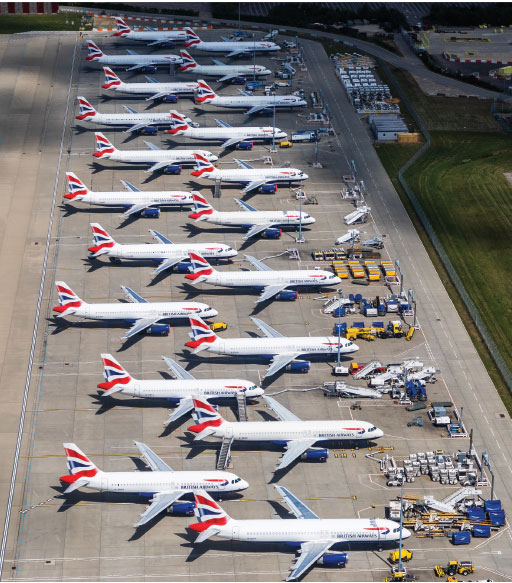
All of this activity occurred while MROs such as Avia Solutions Group subsidiary FL Technics were trying to maintain their regularly scheduled services to customers, albeit on a reduced scale due to COVID-19. “It was quite a challenge to find a balance between heavy maintenance checks that had been contracted throughout the season and the number of short notice storage or parking (available for immediate return to service) requests coming from our customers,” said Juozas Lapeika, the company’s deputy CEO and head of Base Maintenance. “Good preparation was of the utmost importance for smoothly supporting all of these requests at the same time. This is why Avia Solutions Group management dedicated one team of our staff to handle storage and parking requests for aircraft, the performance of periodic checks and eventually Return to Service tasks, which gave us required flexibility and swift reaction time.”
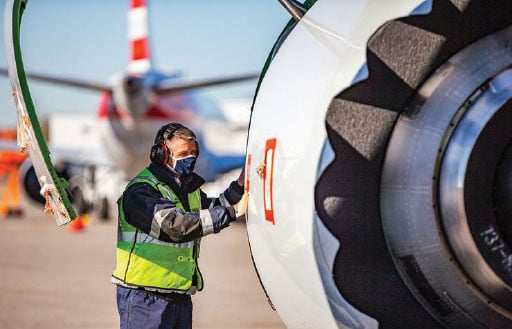
During the push to ground aircraft, Avia Solutions Group worked closely with airport authorities in Vilnius, Lithuania (where the company is headquartered) to expand the number of storage spaces available to its airline clients. “Even a drone was engaged to give us all a good aerial overview to check if the current stored/parked aircraft arrangement was efficient enough,” Lapeika said.
Maintaining Aircraft During Storage
Grounded aircraft are like farm animals: They need to be cared for on a regular basis to keep them in peak condition. This was particularly true during the Pandemic Mass Grounding, when the uncertainty as to how long these airliners would be stored plus the need to return them to service whenever possible was on top of everybody’s mind.
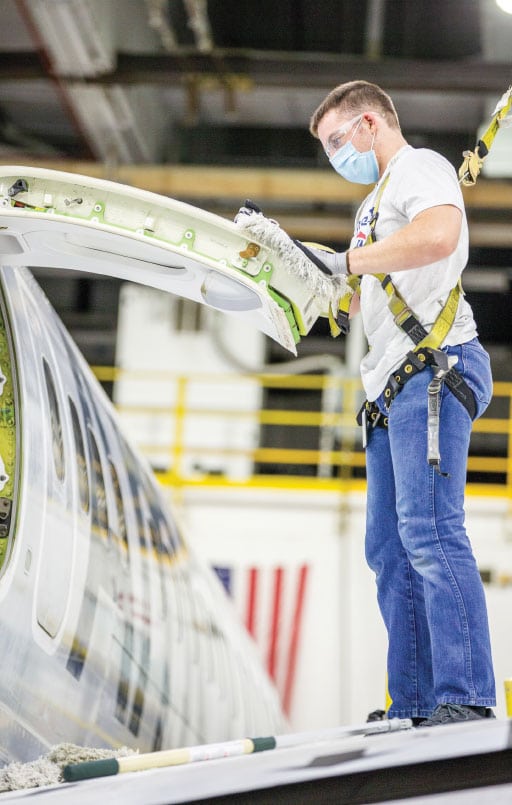
Again, it was only the vast scale of the Pandemic Mass Parking that was new to the aviation industry, not the storing of aircraft in itself. As such, “as per OEM requirements and accordingly provided Work Orders by responsible CAMO organizations, there is a number of periodic tasks that are mandatory to be performed whenever an aircraft is being parked/stored, based on 7 day, 14 day, 30 day, 60 day, 90 day, 180 day, and one year cycle checks,” said Avia’s Lapeika. “These tasks basically cover visual inspection of certain zones, as well as different components or systems functional tests. Despite the aircraft is parked/stored, it is not being left out and needs continuous maintenance support.”
To be precise, “American’s stored aircraft were kept in ready status, carefully worked on and inspected regularly, to ensure they were prepared to fly safely and reliably when they were once again needed for revenue service,” said American Airlines’ Sangricco. “Storage maintenance tasks include everything from running engines and rotating tires to inspecting baggage holds and coffee makers. Maintaining fuel system integrity and ensuring lubrication requirements are also important items maintained throughout the storage process.”
Under United Airlines’ maintenance plan for its stored aircraft, technicians performed scheduled checks and inspections regularly, with the goal of allowing these aircraft to return to service quickly when the opportunity arose. “This work required combination of United’s Tech Ops professionals as well as FAA-approved essential maintenance providers for assistance where necessary,” said the United Airlines spokesperson. “Technology also played an instrumental role in keeping maintenance on schedule to avoid any delays in getting an aircraft back in the air. So our teams used tools like iPads to electronically access critical information about the processes and procedures required to maintain a stored aircraft. In addition, we developed web-based solutions that illustrated the condition and status of every aircraft scheduled for, or currently in, an approved storage program.”
Issues That Arose During Storage
Even with the most conscientious ongoing maintenance, stored aircraft can experience issues when they sit on the ground for extended periods. This was certainly the case for the Pandemic Mass Parking.
According to Boeing spokesperson Rafael Gonzalez, the OEM saw a number of issues arise during this time, each of which it developed fixes for. For example, extended parking could result in corrosion occurring on vulnerable external areas of the aircraft. To address this, “Boeing provided guidance on increasing inspection and cleaning intervals, and has also approved the use of additional corrosion inhibiting compounds (CICs) for relief and mitigation,” he said.
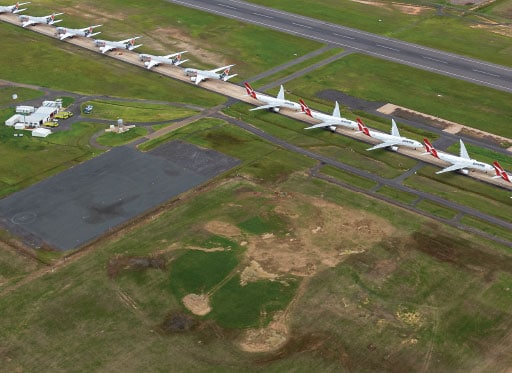
Meanwhile, high humidity and extreme weather events damaged some Line Replaceable Units (LRUs) on the airlines’ stored aircraft. To keep this from happening again, Boeing provided aircraft maintainers with various humidity reduction methods to preserve LRUs such as APUs, batteries, and soft interiors. “We have also worked closely with our customers and MROs to ensure LRUs are maintained properly in extreme weather conditions – below freezing and over 110F — for each Boeing model,” said Gonzalez.
This concern about climate conditions was also cited by the United Airlines spokesperson. “One of the challenges our teams had to plan for was weather, especially in areas where humidity or inclement weather were more of a threat,” they said. “To overcome this challenge, our teams stayed in constant communication with departments across the world to identify alternative storage locations where aircraft could be quickly moved in the event of an impending major weather event.”
Sitting unused for extended periods of time can also cause Component Degradation in APUs, batteries, and Integrated Drive Generators (IDGs). Boeing addressed this by working closely with its suppliers to publish the latest preservation information provided with respect to these components in this OEM’s Maintenance Manuals.
“We communicate frequently to our customers and MROs via Multi-Operator Messages (MOMs), Fleet Team Digest (FTD) Articles and monthly presentations,” Gonzalez said. “Communicating with the fleet prior to making major changes in our maintenance requirements gives our operators ample time to prepare for additional maintenance, if required.”
Finally, there is another source of bugs that can damage aircraft during extend storage, and that source is, well, bugs.
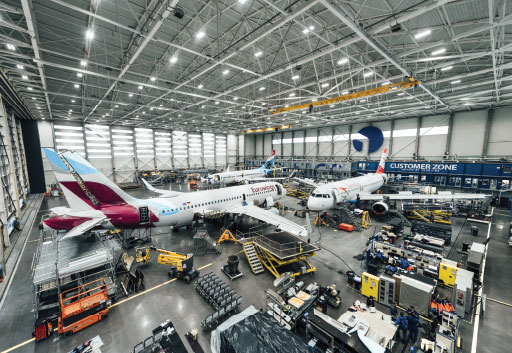
“One of the most frequently heard-of problems during extended time on the ground is a possibility of various bugs finding their way through the pitot-static system covers and settling down inside them,” explained Lapeika. “As you may know the pitot-static system determines aircraft airspeed and altitude. To do this, air enters the pitot tube or static port through calibrated holes during flight, and blocking them would result in erroneous data. Fortunately, there are special procedures meant to overcome such risks, such as the Flushing of the Air Data System task, which are part of our aircraft Return to Service procedure.”
In the same vein, “typical prevention measures during include protection against birds nesting in the engines and keeping insects out of the cabin,” said the Airbus spokesperson. The takeaway: When aircraft sit on the ground for extended periods of time, they have to cope with everything that Nature and Physics can throw at them.
Preparing Aircraft to Return to Service
Returning stored aircraft to service is a complex and painstaking process. The fact that an aircraft has been conscientiously monitored and maintained during storage doesn’t mean that it is ‘good to go’. Any protective measures that were employed have to be reversed (right down to uncovering the in-flight entertainment system screens), and all systems must be checked and ‘run up’ on the ground to verify that the airliner is safe to fly.
“To return an aircraft to service all the necessary maintenance actions must be performed,” said Kauffmann. “To this end, Airbus has been advising its operators via webinars, All-Operator-Telex (AOTs) and other channels that this includes all scheduled maintenance, daily and weekly servicing when needed, and the restoration of any defects which may have arisen during the period of storage or parking.”
“Everything required to bring the aircraft back to operational standards and ensure safe use is essential,” emphasises Kauffmann. This includes calendar and mandatory items, Airworthiness Directives, AOT-specified tasks, shelf-life equipment, and any inspections that were/are due to be done. “Upon release into service, the aircraft must be fully airworthy in every respect,” they told Aviation Maintenance magazine. “In 2020 alone, Airbus held more than 100 technical webinars to support worldwide customers with detailed recommendations on this topic.”
One complicating factor is that ‘return to service’ has different meanings to different clients. “We can now identify three scenarios for passenger aircraft that are getting out of long-term storage,” explained Lapeika. “One scenario is regular return to service to the same operator’s fleet. The second is aircraft returning to service after delivery to new operators. And the third is aircraft returning to service and being sent for cargo conversion. Each of these scenarios comes with different volumes of works and requirements. However, Avia is happy to provide all the required support.”
To add to the challenge, “the request to return an aircraft to service might come on quite short notice, which is a challenge for our production team to combine it with ongoing heavy maintenance projects,” he said.
“However, Avia Solutions Group does understand the importance of quick reaction, which is directly connected with our customer’s business success. Therefore, we are always ready to take an ‘extra mile’ proactive approach and come up with out of the box solutions.”
Going the extra mile to restore aircraft to service expeditiously – which is happening now — has been an American Airlines’ priority since the Pandemic Mass Grounding began. “The upline work we’ve done with our Network Planning and other key Operations teams to orchestrate the aircraft returning to full service, ensured our aircraft were ready to fly at a moment’s notice and that we have the right number of aircraft to fly based on demand,” said Sangricco. “A lot of work went into storing aircraft, but the same goes for getting them back in the air and carrying customers.”
“It takes about 1,000 hours of reactivation work to prepare an aircraft ready for commercial service,” he added. “Any aircraft in long-term storage must also complete a satisfactory Maintenance Verification Flight to confirm the aircraft is ready to return to service.”
Over at United Airlines, “our teams are following the aircraft manufacturer’s prescribed guidance on returning an aircraft to service which includes operational and engine checks, deep cleaning, fluids check, and a full inspection,” the United Airlines spokesperson said. “Returning aircraft to service has been an enormous achievement that represents the incredible professionalism, attention to detail and commitment to safety of not just Tech Ops, but rather the entire operations teams at United.”
One can only hope that the return to service efforts now underway represent the final phase of the Pandemic Mass Grounding, and that passenger travel is on its way to full volume recovery in the days to come.
Unfortunately, some of the stored aircraft may never return to the skies, specifically older airliners that are less fuel-efficient than their younger counterparts and in need of extensive overhauls. In such cases, “the more cost-effective solution for the owner or an operator is to part out these aircraft for valuable components and scrap the remaining items along with the airframe,” said Lapeika.
This being said, the rest of these stored aircraft should return to service soon. They have remained flyable thanks to diligent monitoring and maintenance during the Pandemic Mass Grounding – plus keeping birds and bugs outside of the aircraft where they belong.
